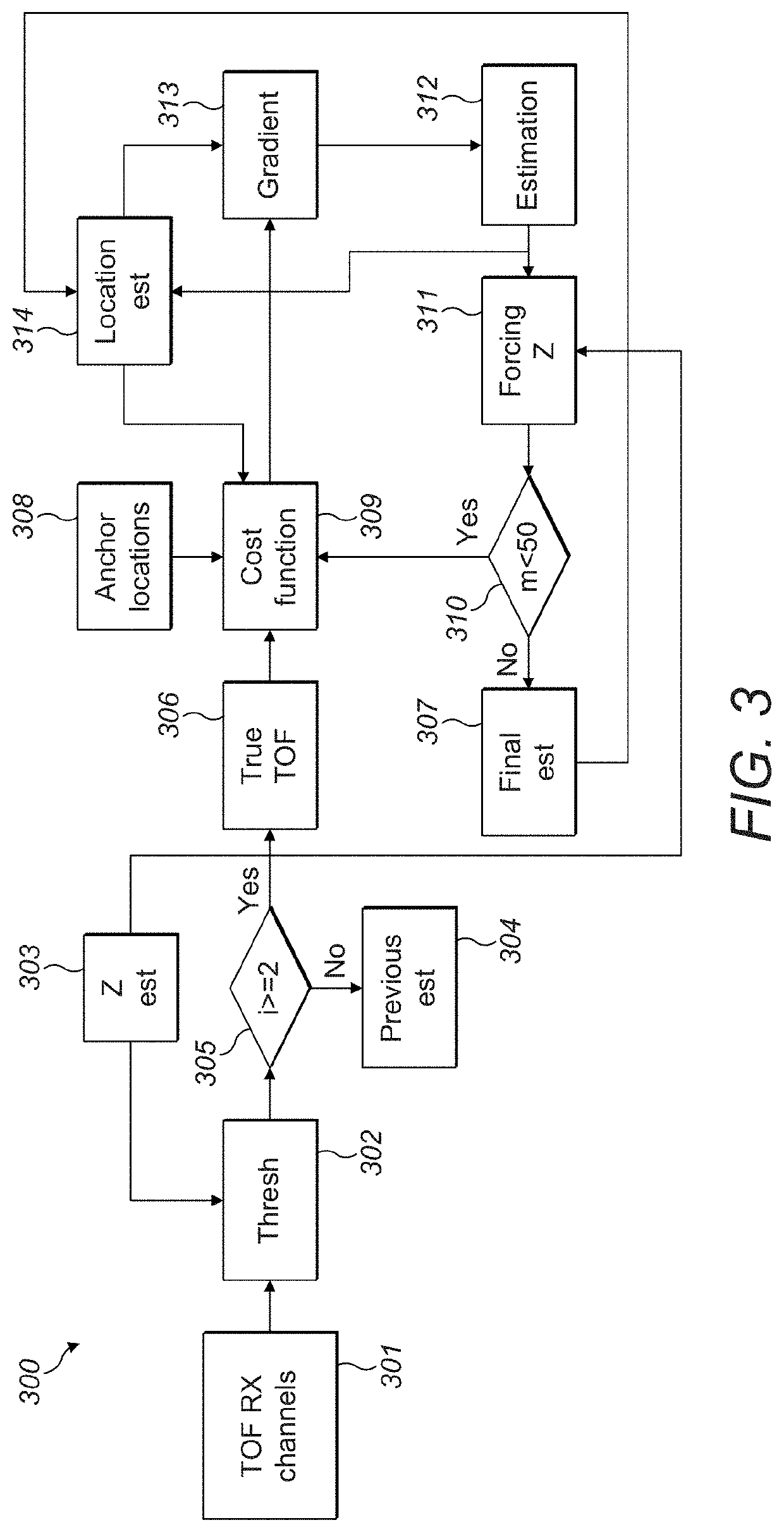Tracking techniques in haptic systems
a technology of haptic systems and tracking techniques, applied in the field of improved techniques of hand tracking within haptic systems, can solve the problems of reducing the ability to work in sync with other techniques for hand tracking, limiting the use of hand tracking successfully, and further limiting the resolution and accuracy of hand tracking
- Summary
- Abstract
- Description
- Claims
- Application Information
AI Technical Summary
Benefits of technology
Problems solved by technology
Method used
Image
Examples
Embodiment Construction
[0027]I. Coarse Estimation of the (x,y) Sub-Space for Hand Tracking
[0028]The proposed techniques aim at reducing the (x,y) domain where the object would be located to a reduced sub-space (quadrant). Either the correlation coefficient or the covariance calculations are used as a means to determine the lack of signal dependency or a strong signal dependency. Consequently, the absence or presence of the object can be determined respectively in one of the four quadrants. In addition, mapping the information of the index of the selected quadrant into specific (x,y) coordinate values is also considered.
[0029]A. Simplified Approach
[0030]Turning to FIG. 1, shown is a schematic 100 of an array of transducers 130 divided into four equivalent areas as marked by the intersecting lines 120a, 120b, creating quadrants. Each quadrant contains a receiving element as marked by the white dots 110a, 110b, 110c, 110d surrounded by transmitting elements. The broader assumption here is that each receiver ...
PUM
 Login to View More
Login to View More Abstract
Description
Claims
Application Information
 Login to View More
Login to View More - R&D
- Intellectual Property
- Life Sciences
- Materials
- Tech Scout
- Unparalleled Data Quality
- Higher Quality Content
- 60% Fewer Hallucinations
Browse by: Latest US Patents, China's latest patents, Technical Efficacy Thesaurus, Application Domain, Technology Topic, Popular Technical Reports.
© 2025 PatSnap. All rights reserved.Legal|Privacy policy|Modern Slavery Act Transparency Statement|Sitemap|About US| Contact US: help@patsnap.com



